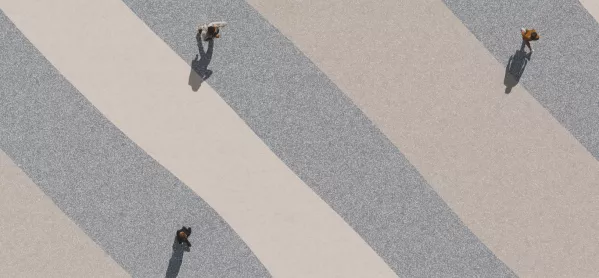Most primary schools did not implement social distancing between pupils and staff within the same bubble in the autumn term, new research suggests.
According to Office for National Statistics data from December, 42 per cent of primaries said that teachers kept two metres from students compared with 96 per cent of secondaries.
And according to the survey, distancing between pupils within bubbles was the least commonly implemented measure.
Data: Teachers at ‘higher’ risk of catching Covid, says ONS
Revealed: Rate of positive Covid tests among teachers
Analysis: Will Covid rates be safe for 8 March school opening?
Only 8 per cent of primaries and 19 per cent of secondaries reported that students were distancing from other students within the same bubble.
Department for Education guidance on these issues had a different emphasis depending on the age of pupils.
Covid: The difficulty of social distancing in schools
It said: “It is strong public health advice that staff in secondary schools maintain distance from their pupils, staying at the front of the class, and away from their colleagues where possible.”
It added: “Ideally, adults should maintain 2 metre distance from each other, and from children.” But it also acknowledged: “We know that this is not always possible, particularly when working with younger children, but if adults can do this when circumstances allow that will help.”
On pupils mixing, the guidance said: “Older children should be encouraged to keep their distance within groups.”
But it added: “We recognise that younger children will not be able to maintain social distancing, and it is acceptable for them not to distance within their group.”
The guidance also noted: “Both the approaches of separating groups and maintaining distance are not ‘all-or-nothing’ options and will still bring benefits even if implemented partially.”
The new ONS report, based on analysis of data from the Schools Infection Survey, jointly led by the London School of Hygiene and Tropical Medicine and Public Health England, says: “In primary schools, consistent with DfE guidance, implementation efforts focused on limiting pupil mixing between bubbles, but less towards limiting contacts between staff and pupils in the same bubble.
“Secondary schools, more commonly than primary schools, implemented measures to limit contact within the same bubble or class (for example, forward-facing desks, teacher remaining at front of class), but had lower implementation of measures to limit contact between bubbles.”
But other school safety measures were widely used, the report adds: “Efforts to ensure symptomatic individuals stayed at home, enhanced cleaning and hygiene protocols, limiting gatherings (assemblies, sports, after-school activities), and staff distancing from other adults were near universally implemented across school types.”
